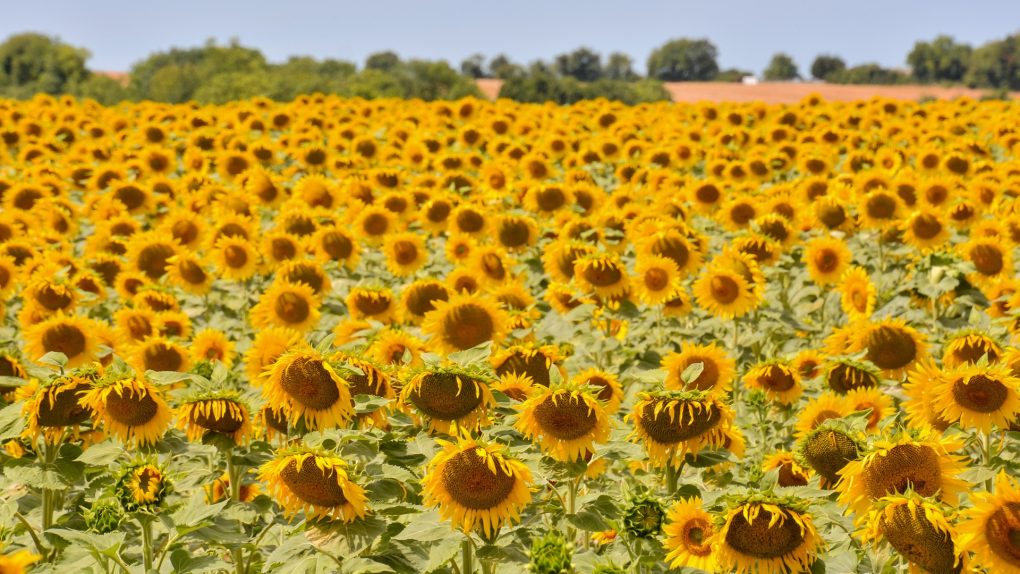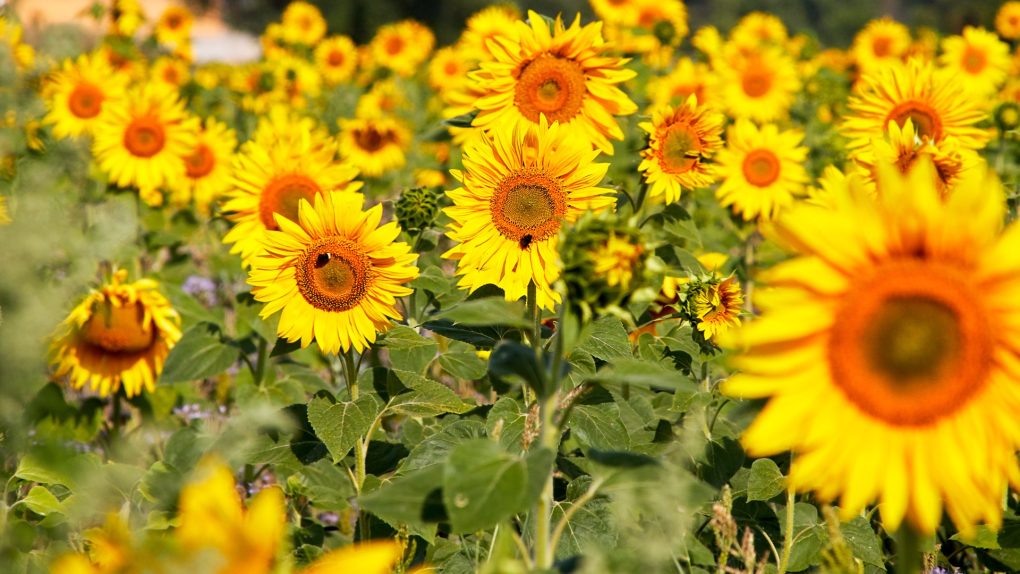Are Sunflowers Wild? Exploring the Origins of this Popular Flower
Sunflowers are a popular plant known for their bright yellow petals and brown centers. They are often associated with summer, gardens, and happiness, but many wonders if sunflowers are wildflowers or only found in gardens and farms.

Sunflowers can be both wild and cultivated. While many people associate sunflowers with gardens and farms, they are native to North and South America and grow wild in many regions. Wild sunflowers are often smaller than their cultivated counterparts and have a more natural, less uniform appearance.
Table of Contents
What are Wild Sunflowers?
Wild sunflowers, scientifically known as Helianthus annuus, are a type of sunflower that grows naturally in the wild. They are a showy multi-bloomed and branching plant that typically grows up to 6 feet tall and has a peak blooming period of one month in full sun with well-drained soil. Wild sunflowers are an important pollinator plant, attracting bees, butterflies, and birds from mid-summer to fall.
Description of Wild Sunflowers
The common wild sunflower has a rough, hairy stem growing up to 4.5 meters high and broad, coarsely toothed, rough leaves arranged in spirals. The attractive heads of flowers are 7.5-15 cm wide in wild specimens and often 30 cm or more in cultivated types. The flowers are typically yellow, but can also be red or orange.
Wild sunflowers are coarse, hairy, leafy, fast-growing annual plants that typically grow 1 to 1.5 meters high and have stiff upright stalks. Plants of this species are considered weedy because they are commonly seen growing on roads, fences, fields, and in waste areas.
Distribution and Habitat
Wild sunflowers are native to North America and are found throughout the United States and Canada. They are commonly seen growing in open fields, along roadsides, waste areas, and disturbed habitats. They prefer well-drained soils and full sun, but can tolerate various soil types and growing conditions.
Wild sunflowers, including birds and small mammals, are an important food source for wildlife. They are also commonly grown as ornamental plants in gardens and landscapes and used in producing sunflower oil and other products.
Cultivated Sunflowers vs. Wild Sunflowers
Differences in Appearance
Wild sunflowers have smaller flower heads, usually around 2-5 inches in diameter, while cultivated sunflowers have one large flower head that can grow up to 12 inches. Wild sunflowers also tend to have more blooms than cultivated sunflowers, which usually only produce one single bloom. Wild sunflowers have a more natural, untamed appearance with smaller, thinner petals and a darker center.
Differences in Growth and Reproduction
Wild sunflowers can grow and reproduce more easily than cultivated sunflowers. They can reseed and spread prolifically, making them a common sight in fields and along roadsides. Cultivated sunflowers, however, require more care and attention to grow properly. They are usually grown from seeds specifically bred for their large size and uniform shape, and they require regular watering and fertilization to thrive.
Another key difference between wild and cultivated sunflowers is their growth habit. Wild sunflowers tend to branch frequently, producing multiple stems and blooms, while cultivated sunflowers usually have a single, tall stalk with one large flower head. This branching habit also makes wild sunflowers more resistant to wind and weather damage, as they can support themselves more effectively.
Uses of Wild Sunflowers
Wild sunflowers have been used for various purposes throughout history. This section will explore some of the historical and cultural uses of wild sunflowers and their ecological importance.
Historical and Cultural Uses
Native American tribes used wild sunflowers for a variety of purposes. They ground the seeds into flour and baked them into cakes. They also used an infusion of the flowers for chest pains or pulmonary problems. The seeds can be used to make a purple-gray dye. The Hidatsa tribe used wild sunflowers extensively for food and medicine and believed the sunflower was a powerful symbol of life and growth.
European settlers also recognized the value of wild sunflowers. They used the seeds to make oil for cooking and as a fuel source. The flowers were used to make dyes, and the leaves were used as fodder for livestock.

Ecological Importance
Wild sunflowers are an important food source for many animals, including birds, insects, and small mammals. They are also a valuable source of nectar for bees and other pollinators. The seeds of wild sunflowers are high in protein and fat, making them an important food source for many species.
In addition to their ecological importance, wild sunflowers also have aesthetic value. They are common in meadows and fields, and their bright yellow flowers add color to the landscape.
Wild sunflowers have played an important role in human culture and the natural world. Their many use and ecological importance make them valuable and versatile plant.
Conservation Status of Wild Sunflowers
Wild sunflowers are an important source of genetic diversity for the cultivated sunflower (Helianthus annuus). However, the conservation status of wild sunflowers is of concern due to various threats to their survival.
Threats to Wild Sunflowers
The following are some of the threats to wild sunflowers:
- Habitat loss due to urbanization, agriculture, and other human activities
- Climate change and extreme weather events
- Invasive plant species that compete with wild sunflowers for resources
- Overgrazing by livestock
- Collection of wild sunflowers for ornamental purposes
Conservation Efforts
Conservation efforts for wild sunflowers include both in situ and ex situ conservation methods. In situ conservation involves protecting and managing wild sunflower populations in their natural habitats. Ex situ conservation involves collecting and storing seeds in gene banks and botanical gardens.
Some specific conservation efforts for wild sunflowers include:
- Identification and protection of important wild sunflower habitats
- Restoration of degraded habitats
- Control of invasive plant species
- Development of new sunflower cultivars that are more resistant to pests and diseases
- Collection and storage of wild sunflower seeds in gene banks and botanical gardens

Efforts to conserve wild sunflowers are important to maintain genetic diversity in the cultivated sunflower and ensure wild sunflower populations’ survival for future generations.
